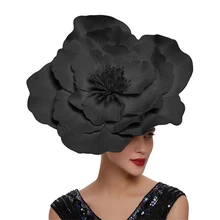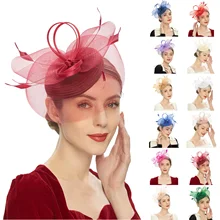Fascinators are an elegant and sophisticated accessory that have been popular for centuries. They are typically worn by women for formal occasions such as weddings, horse racing events, and other celebrations. The history of fascinators dates back to ancient times, where they were worn by both men and women. In this article, we will explore the fascinating history of fascinators and how they have evolved over time.
The Origin Of Fascinators
The term fascinator originally referred to a type of lightweight, lacy headscarf worn by women in the 17th and 18th centuries. These headscarves were often decorated with feathers, beads, and other embellishments, making them a popular accessory for formal events like balls and weddings.
In the 19th century, fascinators became more elaborate, with the addition of silk flowers, ribbons, and other decorative elements. They were still worn as headscarves, but were now more ornate and eye-catching, making them a statement accessory for women of all ages.
Fascinators In The 20th Century
In the early 20th century, fascinators continued to be popular, particularly among the upper classes. They were often worn with elaborate updos and accompanied by long gloves and delicate purses, creating a look of timeless elegance and sophistication.
During the 1920s and 1930s, fascinators underwent a significant transformation. As women’s hairstyles became shorter and more streamlined, the traditional headscarf-style fascinator fell out of favor. Instead, designers began to create smaller, more compact fascinators that could be worn as hair accessories.
These new fascinators were often made from feathers, lace, and other delicate materials, and were designed to complement the sleek, modern hairstyles of the era. They were worn to cocktail parties, weddings, and other formal occasions, and became a symbol of elegance and femininity.
Fascinators In Contemporary Fashion
Today, fascinators continue to be a popular accessory for women of all ages. They are often worn to formal events like weddings, horse racing events, and other celebrations, and can be made from a wide range of materials, including feathers, flowers, and crystals.
Fascinators have also become an important part of British culture, particularly in the world of horse racing. The Royal Ascot, one of the most prestigious horse racing events in the world, has a strict dress code that includes the wearing of hats or fascinators by female attendees.

Fascinators have come a long way since their origins as lightweight headscarves. Today, they are a popular accessory that adds a touch of elegance and sophistication to any outfit. With their rich history and timeless appeal, it’s no wonder that fascinators continue to be a favorite among women of all ages.
The role of fascinators in fashion
Fascinators have played a significant role in fashion for centuries. They are often associated with formal events, such as weddings, horse racing events, and other celebrations, where they are worn as a statement accessory to complement an outfit. However, fascinators have also become a fashion staple in their own right, with designers incorporating them into their collections and everyday consumers wearing them as part of their daily looks.
Fascinators are versatile accessories that can be made from a wide range of materials, including feathers, flowers, lace, crystals, and more. They come in a variety of shapes and sizes, from small and delicate to large and elaborate, making them a versatile accessory that can be worn with a variety of outfits.
In contemporary fashion, fascinators can be seen on runways, in editorial shoots, and on the red carpet. Designers such as Philip Treacy, Kate Middleton’s go-to milliner, and Stephen Jones have made fascinators a key feature in their collections. They have transformed the traditional fascinator into a modern and stylish accessory, incorporating bold colors, textures, and shapes that push the boundaries of traditional hat-making.

Fascinators have also become a staple in British fashion, particularly in the world of horse racing. The Royal Ascot, one of the most prestigious horse racing events in the world, has a strict dress code that includes the wearing of hats or fascinators by female attendees. As a result, fascinators have become an important part of British culture, with attendees often competing to wear the most unique and eye-catching fascinator.
Overall, fascinators have played a significant role in fashion, both as a statement accessory for formal events and as a versatile accessory that can be incorporated into everyday looks. With their rich history and timeless appeal, fascinators will continue to be a favorite among fashion lovers for years to come.